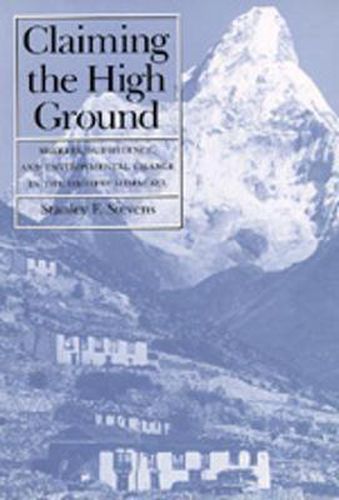Readings Newsletter
Become a Readings Member to make your shopping experience even easier.
Sign in or sign up for free!
You’re not far away from qualifying for FREE standard shipping within Australia
You’ve qualified for FREE standard shipping within Australia
The cart is loading…






Stanley Stevens brings a new historical perspective to his study of a subsistence society in ever-increasing contact with the outside world. The Khumbu Sherpas, famous for their mountaineering exploits, have frequently been depicted as victims of the world’s highest-altitude tourist boom. But has the flow of outsiders to Mt Everest and the heights of Nepal in fact destroyed a stable, finely-balanced relationship between the Sherpas and their environment? Steven’s innovative use of oral history and cultural ecology suggests that tourism is not the watershed circumstance many have considered it to be. Drawing on extensive interviews and data gathered during three years of fieldwork, he documents the Sherpas’ ingenious adaptation to high-altitude conditions, their past and present agricultural, pastoral, trade and forest management practices, and their own perspectives on the environmental history of their homeland.
$9.00 standard shipping within Australia
FREE standard shipping within Australia for orders over $100.00
Express & International shipping calculated at checkout
Stanley Stevens brings a new historical perspective to his study of a subsistence society in ever-increasing contact with the outside world. The Khumbu Sherpas, famous for their mountaineering exploits, have frequently been depicted as victims of the world’s highest-altitude tourist boom. But has the flow of outsiders to Mt Everest and the heights of Nepal in fact destroyed a stable, finely-balanced relationship between the Sherpas and their environment? Steven’s innovative use of oral history and cultural ecology suggests that tourism is not the watershed circumstance many have considered it to be. Drawing on extensive interviews and data gathered during three years of fieldwork, he documents the Sherpas’ ingenious adaptation to high-altitude conditions, their past and present agricultural, pastoral, trade and forest management practices, and their own perspectives on the environmental history of their homeland.